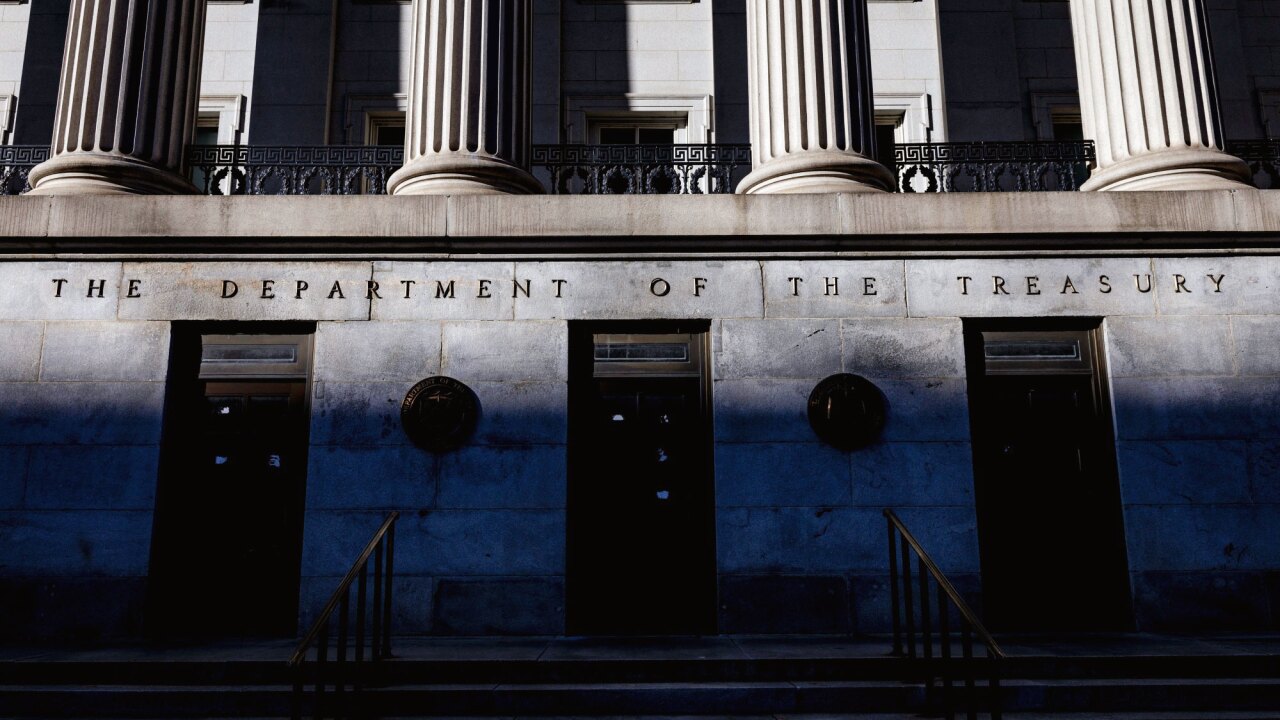Federal Reserve
Federal Reserve
-
Investor confidence in US bonds can no longer be taken for granted — not after a years-long borrowing binge, not with a president hell-bent on rewriting the rules at home and abroad and antagonizing many of the country's biggest creditors.
April 11 -
It's bringing back memories of the basis-trade unwinds at the onset of the pandemic — when widespread deleveraging sparked blowups of the popular hedge fund strategy that sent bonds tumbling.
April 8 -
Federal Reserve officials want to see how exactly new trade policies impact the U.S. economy before adjusting interest rates. Markets and monetarists have different ideas about what that might look like.
April 8 -
The central bank wants to let Trump's policies play out across the economy before deciding which way to move interest rates, and it's too soon to know what the impacts will be, the Federal Reserve chair said.
April 4 -
The bid for havens also saw traders boosting bets on Fed interest-rate cuts, fully pricing in a quarter-point move by June.
April 3 -
The Federal Reserve governor said it is healthy to examine the regulatory architecture, but stressed the importance of the central bank having insight into the banking system.
March 28 -
For bond investors who'd been piling into Treasuries over recent weeks, Wednesday's Fed policy announcement offered vindication.
March 21 -
Chair Jerome Powell repeated the central bank is not in a hurry to adjust borrowing costs. Officials can wait for greater clarity on the impact of policies.
March 19 -
Fresh tariffs from the Trump administration, paired with retaliatory action from US trade partners, have fanned Americans' expectations for future inflation.
March 18 -
Summers said a combination of major immigration restrictions, federal government layoffs and damage to US competitiveness from President Donald Trump's tariffs.
March 11 -
The bond market in the past month has been caught between signs that US economic growth is slowing.
March 7 -
He also reiterated that he and Trump are focused on bringing down 10-year Treasury yields, rather than on the Fed's short-term benchmark rate.
March 6 -
Thirty members of the Senate Banking and House Financial Services committees signed a letter petitioning the administration to name a new vice chair for supervision — and quickly.
March 3 -
Notably, Trump described the January decision to hold rates steady – which looks set to be the Fed's stance for some time — as "the right thing to do."
February 28 -
Federal Reserve Chair Jerome Powell said insurance companies and banks are already pulling out of disaster-prone areas, which could pose problems.
February 12 -
The Federal Reserve governor said regulators have stifled the banking system's ability to experiment with emerging technologies.
February 5 -
State banking associations across the country said that Michelle Bowman should be the Federal Reserve vice chair for supervision, not least because she already sits on the Fed board and could start immediately.
January 31 -
It took until Thursday for the president to indicate he'd follow through on some of his tariff threats, meaning investors who had been bracing for levies to be imposed on day one of his term had a couple weeks of relief.
January 31 -
Stability in mortgage rates may be key to unlocking pent-up demand during the upcoming spring homebuying season, but with loans still expensive and prices continuing to rise, affordability remains a hurdle.
January 30 -
Strong economic growth coupled with a solid labor market allows officials to wait for further evidence of cooling inflation before adjusting rates again. It also offers them time to evaluate President Donald Trump's policies.
January 29


















